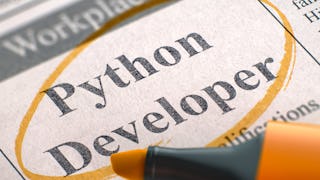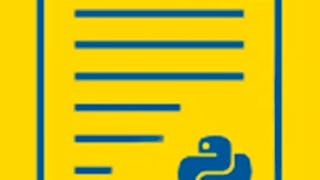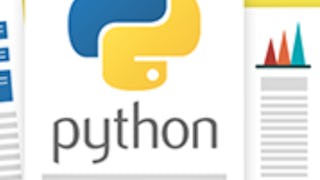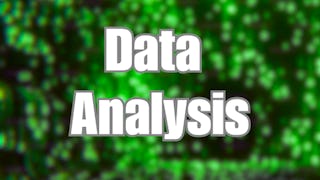Is Tableau a Programming Language?
August 5, 2024
Article



This course is part of Introduction to Scripting in Python Specialization


Instructors: Scott Rixner
Instructor ratings
We asked all learners to give feedback on our instructors based on the quality of their teaching style.


40,240 already enrolled
Included with 
(887 reviews)
(887 reviews)

Add to your LinkedIn profile
2 assignments



Add this credential to your LinkedIn profile, resume, or CV
Share it on social media and in your performance review

This course will continue the introduction to Python programming that started with Python Programming Essentials and Python Data Representations. We'll learn about reading, storing, and processing tabular data, which are common tasks. We will also teach you about CSV files and Python's support for reading and writing them. CSV files are a generic, plain text file format that allows you to exchange tabular data between different programs. These concepts and skills will help you to further extend your Python programming knowledge and allow you to process more complex data.
By the end of the course, you will be comfortable working with tabular data in Python. This will extend your Python programming expertise, enabling you to write a wider range of scripts using Python. This course uses Python 3. While most Python programs continue to use Python 2, Python 3 is the future of the Python programming language. This course uses basic desktop Python development environments, allowing you to run Python programs directly on your computer.
This module will teach you about Python's dictionary data type and its capabilities. Dictionaries are used to map keys to values within programs.
7 videos2 readings1 assignment
This module will teach you about storing tabular data within Python programs using lists and dictionaries.
4 videos2 readings1 assignment
This module will teach you the basics of CSV files and how to read them from Python programs. We will discuss the use of Python's csv module to help you access tabular data in CSV files.
8 videos4 readings2 app items
This module will teach you how to sort data in Python. You will organize and analyze tabular data.
6 videos3 readings1 app item
We asked all learners to give feedback on our instructors based on the quality of their teaching style.

Instructor ratings
We asked all learners to give feedback on our instructors based on the quality of their teaching style.




Rice University is consistently ranked among the top 20 universities in the U.S. and the top 100 in the world. Rice has highly respected schools of Architecture, Business, Continuing Studies, Engineering, Humanities, Music, Natural Sciences and Social Sciences and is home to the Baker Institute for Public Policy.

Rice University
Course

Codio
Course

Course

University of Colorado Boulder
Specialization




887 reviews
76.09%
16.68%
5.07%
1.35%
0.78%
Showing 3 of 887
Reviewed on May 20, 2020
Great class. It might not be perfect for beginners, but good for someone who has had one semester in Python programming. Thank you, everyone!
Reviewed on Aug 7, 2020
One of the best courses on data analysis in python. It was a deep dive into the basics. More than the course videos, i enjoyed the assignments more.
Reviewed on Jul 12, 2021
Extremely clear explanations, and good practice exercises for evaluation. Builds well upon previous courses in the specialization. Excellent course.

Unlimited access to 10,000+ world-class courses, hands-on projects, and job-ready certificate programs - all included in your subscription
Earn a degree from world-class universities - 100% online
Upskill your employees to excel in the digital economy
Access to lectures and assignments depends on your type of enrollment. If you take a course in audit mode, you will be able to see most course materials for free. To access graded assignments and to earn a Certificate, you will need to purchase the Certificate experience, during or after your audit. If you don't see the audit option:
The course may not offer an audit option. You can try a Free Trial instead, or apply for Financial Aid.
The course may offer 'Full Course, No Certificate' instead. This option lets you see all course materials, submit required assessments, and get a final grade. This also means that you will not be able to purchase a Certificate experience.
When you enroll in the course, you get access to all of the courses in the Specialization, and you earn a certificate when you complete the work. Your electronic Certificate will be added to your Accomplishments page - from there, you can print your Certificate or add it to your LinkedIn profile. If you only want to read and view the course content, you can audit the course for free.
If you subscribed, you get a 7-day free trial during which you can cancel at no penalty. After that, we don’t give refunds, but you can cancel your subscription at any time. See our full refund policy.
Yes. In select learning programs, you can apply for financial aid or a scholarship if you can’t afford the enrollment fee. If fin aid or scholarship is available for your learning program selection, you’ll find a link to apply on the description page.
Financial aid available,
Learn on your own time from top universities and businesses.
Already on Coursera?
I accept Coursera's Terms of Use and Privacy Notice. Having trouble logging in? Learner help center
This site is protected by reCAPTCHA Enterprise and the Google Privacy Policy and Terms of Service apply.